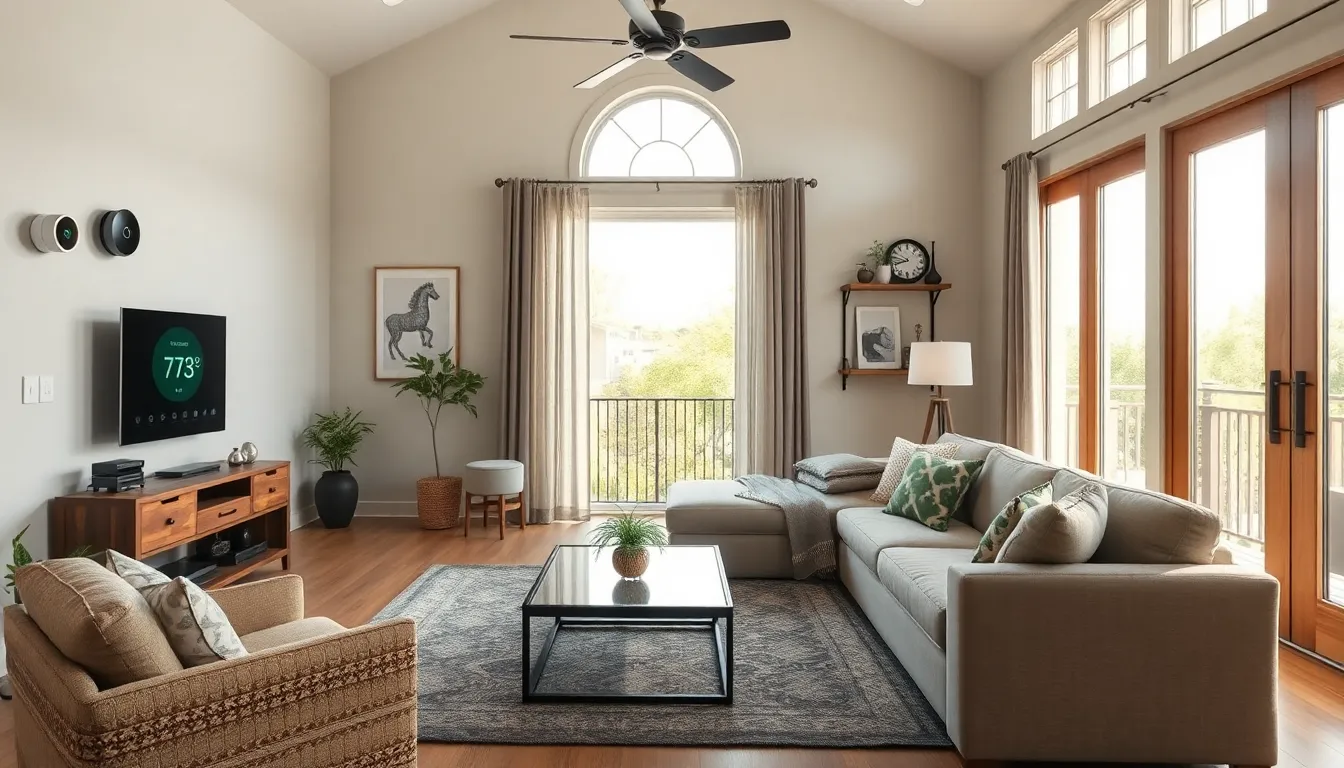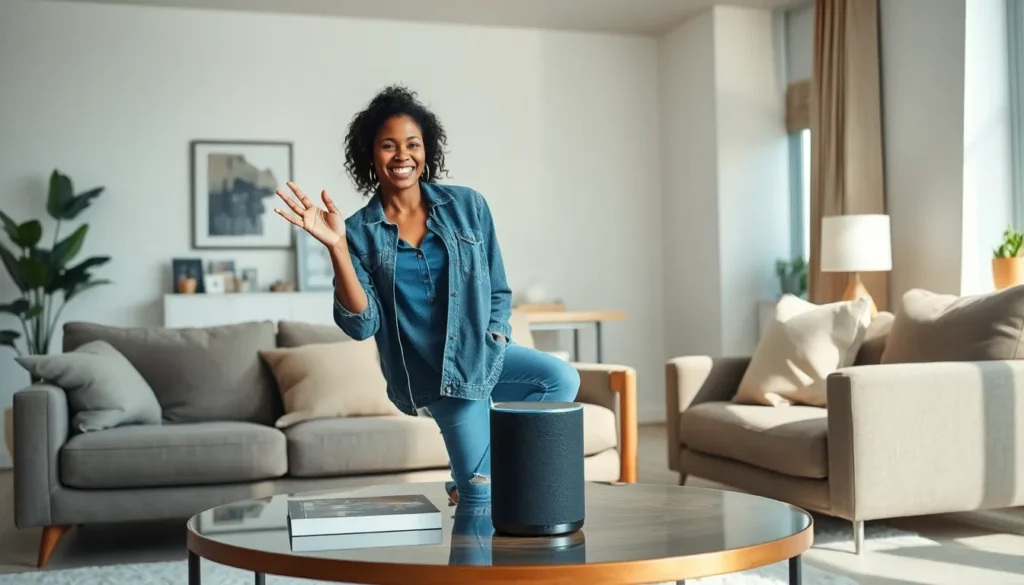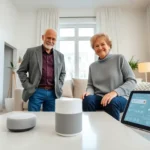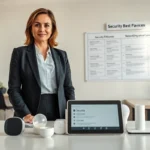Imagine walking into your home and having it greet you like an old friend. With cloud-based smart home technology, that dream is closer than ever. These high-tech marvels don’t just turn on lights or adjust the thermostat; they learn your habits, anticipate your needs, and might even remind you to take out the trash—because let’s face it, that’s a chore no one enjoys.
As homes get smarter, the cloud becomes the brain behind the operation, seamlessly connecting devices and making life easier. Picture this: you’re cozy on the couch, and with a simple voice command, your home transforms into a cozy cinema or a serene spa. Who knew that living in the future could feel this good? Dive into the world of cloud-based smart homes, where convenience meets innovation, and you might just find yourself wondering how you ever lived without it.
Overview of Cloud-Based Smart Home
Cloud-based smart home technology offers significant advantages for daily living. Users enjoy the convenience of devices communicating effortlessly through the cloud. Integration of smart devices enhances home automation, providing customized solutions that adapt to individual preferences.
Voice command capabilities simplify interaction with these systems, enabling control over various functions like lighting, temperature, and security. For instance, residents can adjust their thermostat or lock doors remotely with just a simple command. Such innovations not only enhance comfort but also improve energy efficiency by optimizing usage patterns.
Security features benefit greatly from cloud integration. Real-time monitoring via smart cameras and alerts keeps homeowners informed about their property’s safety. Notifications about unusual activities enhance peace of mind while one is away.
Data analytics play a pivotal role in creating user-centric environments. Continuous learning algorithms analyze usage trends, adapting settings based on routines. For example, a home might learn to lower lights and adjust music based on the time of day.
Robust interoperability among devices encourages a cohesive atmosphere. Smart hubs serve as central points of control, linking various brands and technologies seamlessly. This compatibility allows users to build personalized ecosystems tailored to their lifestyles.
Overall, cloud-based smart home solutions redefine modern living. With enhanced convenience, security, and energy efficiency, these systems provide a pathway to smarter homes that anticipate user needs and streamline daily routines.
Benefits of Cloud-Based Smart Homes

Cloud-based smart homes provide numerous advantages that enhance daily living. Key benefits include enhanced security features and improved energy efficiency.
Enhanced Security Features
Enhanced security features form a cornerstone of cloud-based smart home technology. Homeowners gain access to real-time monitoring through security cameras linked to the cloud. Notifications about unusual activities keep users informed instantly. Integration with smart door locks allows for remote locking and unlocking, increasing convenience and safety. Furthermore, automated alerts notify homeowners of potential breaches, enabling swift responses to threats. Control over home security from anywhere means individuals can ensure their properties remain safe even while traveling.
Energy Efficiency and Management
Energy efficiency and management represent another significant benefit of cloud-based smart homes. Smart thermostats adjust heating and cooling based on user habits and preferences, leading to energy savings. Remote monitoring of energy usage allows homeowners to identify patterns and optimize consumption. Scheduling functionalities enable devices to operate during off-peak hours, further reducing costs. Integration with solar power systems maximizes energy use, enhancing sustainability. Ultimately, such management leads to reduced utility bills and a smaller environmental footprint.
Popular Cloud-Based Smart Home Devices
Cloud-based smart home devices enhance automation and connectivity, catering to modern needs. Key products include smart speakers, smart security cameras, and various other devices designed to improve daily living.
Smart Speakers and Assistants
Smart speakers and assistants serve as central command hubs in cloud-based homes. They respond to voice commands, allowing users to manage multiple devices through simple requests. Popular options include Amazon Echo and Google Nest, which integrate seamlessly with many smart home ecosystems. Music playback, weather updates, and reminders are just a few functions these devices perform. Users find convenience in controlling lights, thermostats, and security systems without physical interaction. Smart assistants also learn user preferences over time, tailoring responses to become more intuitive.
Smart Security Cameras
Smart security cameras provide real-time monitoring and enhanced safety for homes. Devices like Ring and Arlo connect to the cloud, allowing homeowners to access live feeds from anywhere. Notifications of movement and potential security breaches arrive instantly on smartphones, ensuring vigilant oversight. Many models offer two-way audio, enabling communication with anyone on the property. These cameras often feature night vision and customizable motion detection, providing flexibility for various scenarios. Integration with smart locks and alarms creates a comprehensive security solution that simplifies home protection.
Challenges and Considerations
Adopting cloud-based smart home technology presents several challenges and considerations that require attention. Addressing these issues ensures a more secure and reliable smart home environment.
Privacy and Data Security Issues
Data collected by smart home devices raises significant privacy concerns. Homeowners often share sensitive information, which can potentially be accessed by unauthorized entities. Cybersecurity threats, such as hacking and data breaches, pose risks for those using cloud-connected devices. Many users may not fully understand how their data is used and stored, leading to mistrust. Incorporating robust encryption methods and employing regular software updates can enhance protection against these threats. Educating users about data privacy policies fosters greater awareness and responsibility regarding personal information.
Dependency on Internet Connectivity
Reliance on stable internet connectivity creates potential vulnerabilities in cloud-based smart homes. Interruption in service can result in loss of control over devices, impacting functionalities such as security and climate regulation. Homeowners might experience downtime affecting their convenience and safety. To mitigate this issue, investing in a reliable internet connection with sufficient bandwidth is essential. Utilizing local device controls can ensure basic functions remain operational during outages. Establishing backup systems provides additional protection against disruptions, helping to maintain a smooth smart home experience.
Future Trends in Cloud-Based Smart Homes
Emerging trends in cloud-based smart homes highlight continual advancements in automation and user experience. Increased artificial intelligence integration personalizes interactions, allowing systems to adapt to individual lifestyles and preferences. Improved voice recognition capabilities streamline user commands, making everyday tasks simpler and more efficient.
Device interoperability remains a key focus, with manufacturers working to enhance compatibility across various smart home platforms. Enhanced cross-device communication facilitates seamless networking, enabling a cohesive ecosystem that simplifies management. Enhanced security solutions evolve with advanced encryption technologies, ensuring that user data remains protected against cyber threats.
Energy management systems grow smarter as cloud computing facilitates data analytics. Smart thermostats and energy monitors utilize real-time data to optimize energy use, leading to more significant energy savings. Homeowners benefit from systems that automatically identify consumption patterns and suggest adjustments for increased efficiency.
Sustainability continues to drive innovations in cloud-based smart homes. Solar power integration with smart home systems manages energy production and consumption effortlessly. Homeowners leverage this technology to lower utility bills and reduce their environmental impact, aligning with global sustainability goals.
Expanded use of augmented reality applications revolutionizes smart home interfaces. Users will manipulate smart home settings through visual overlays, enhancing engagement and user experience. Enhanced user interfaces reflect the growing importance of data visualization in home management.
Finally, as cloud-based smart home technology evolves, user education remains a crucial aspect. Homeowners must stay informed about privacy, data security, and emerging features. Manufacturers will prioritize transparency to build trust, ensuring consumers feel confident in adopting these innovations.
Cloud-based smart home technology is reshaping how people interact with their living spaces. By leveraging advanced automation and artificial intelligence, it offers unparalleled convenience and security. Users can effortlessly manage their homes through voice commands while enjoying enhanced energy efficiency and real-time monitoring.
As technology continues to evolve, the potential for smarter homes grows. Future advancements promise even greater interoperability and user engagement, ensuring that homeowners can tailor their environments to fit their lifestyles. With a focus on privacy and data security, adopting these innovative solutions can lead to a more connected and efficient way of living. Embracing cloud-based smart home technology is not just about convenience; it’s about creating a safer and more sustainable future.













